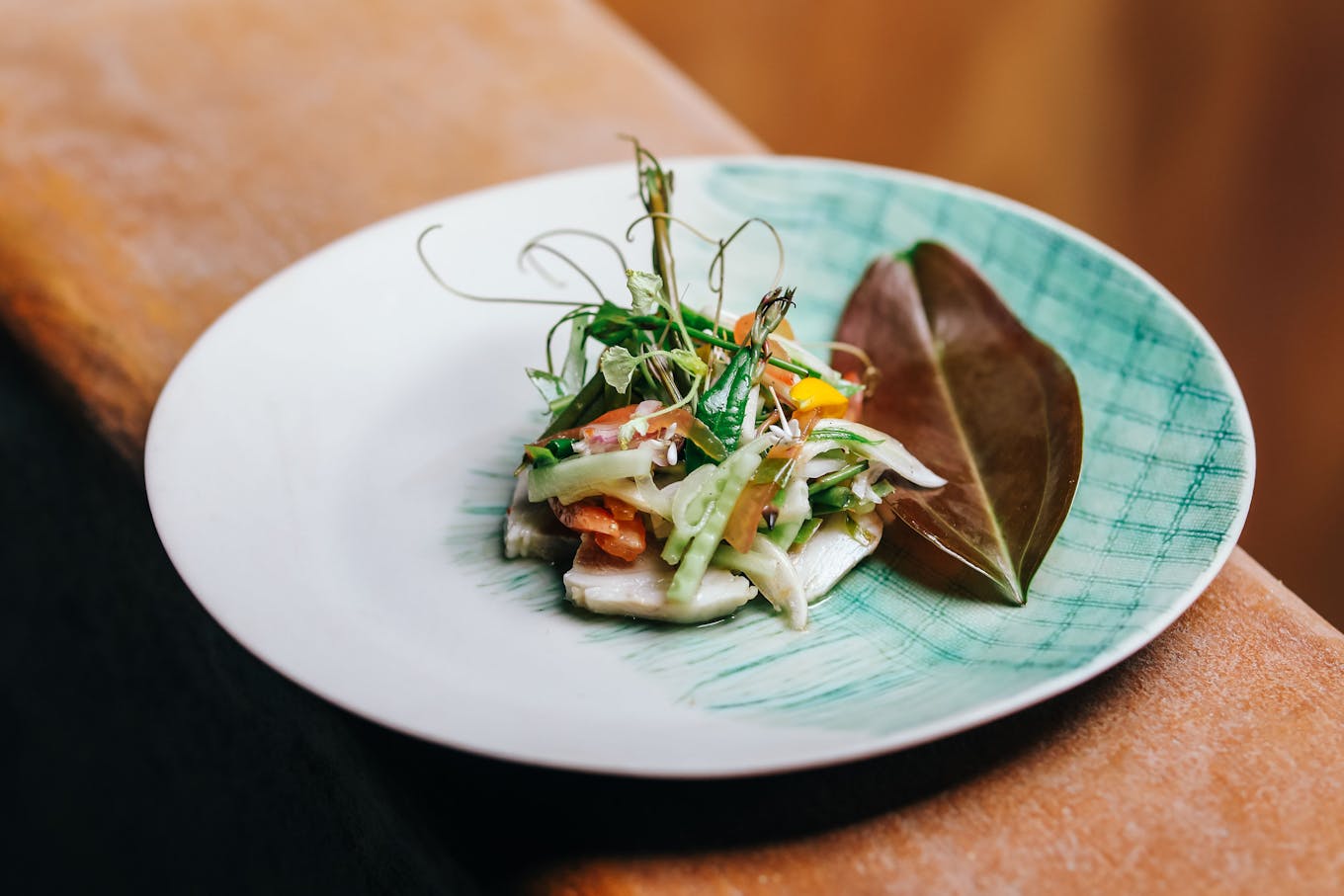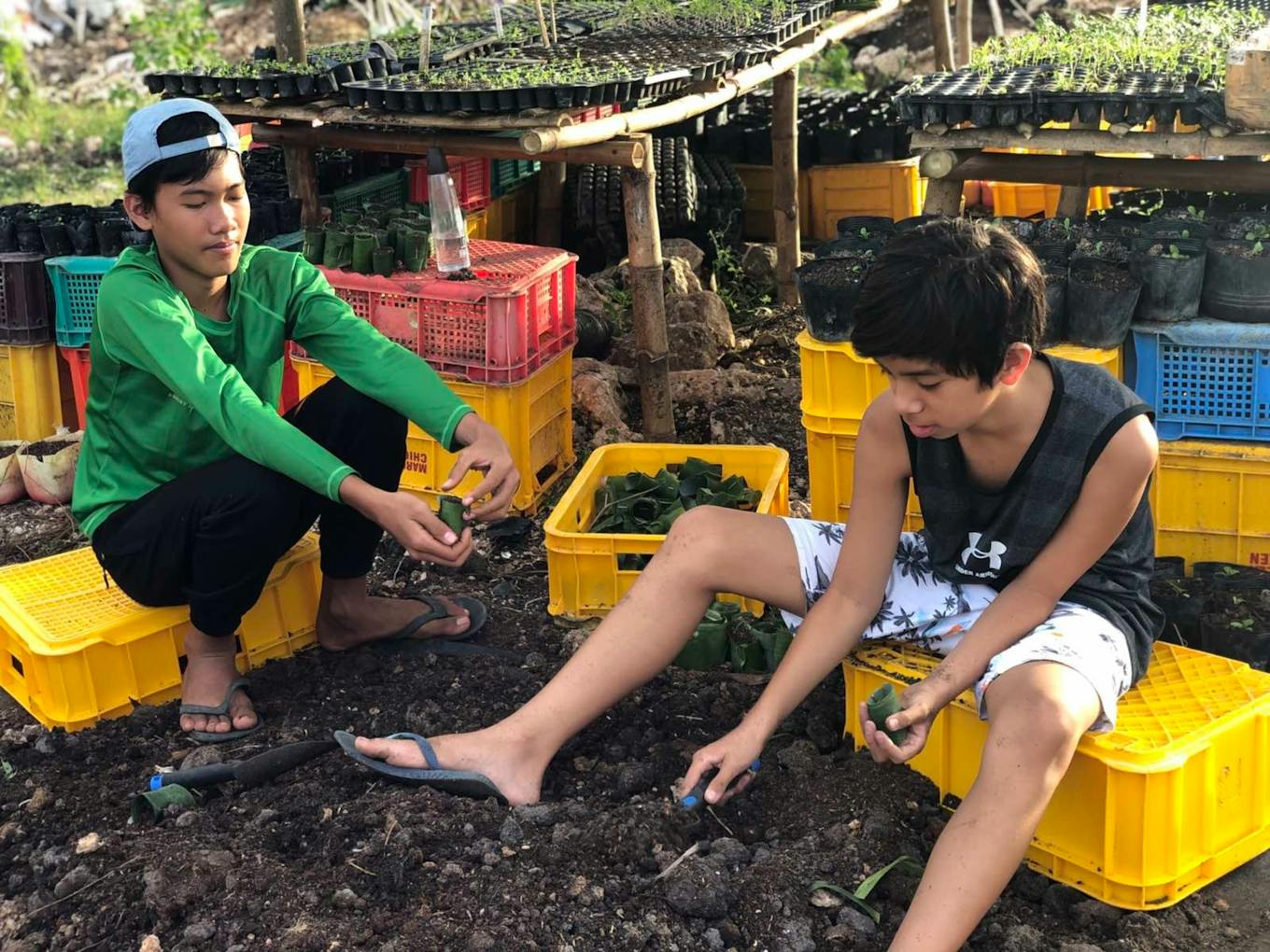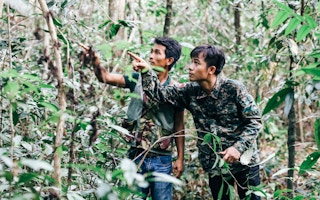As the globe grapples to adapt to a post-covid world, Southeast Asia’s hospitality players are shifting gear to cater to the predicted change in demand. Buffets are being banished and menus trimmed, paving the way for farm-to-table offerings to emerge as a fashionable choice for the region’s conscientious diners.
To continue reading, subscribe to Eco‑Business.
There's something for everyone. We offer a range of subscription plans.
- Access our stories and receive our Insights Weekly newsletter with the free EB Member plan.
- Unlock unlimited access to our content and archive with EB Circle.
- Publish your content with EB Premium.
Farm-to-table tourism is where hotels and restaurants connect with local farmers or grow produce on their property to provide guests with fresh and locally produced ingredients, while supporting neighbouring agricultural communities. Activities include cooking classes, helping farmers in the fields and munching on meals with ingredients sourced from a just few kilometres away.
Future Markets Insight has predicted that agritourism, which includes farm-to-table initiatives, will generate US$622 billion by 2029.
“The appeal is in the comfort of knowing where your food comes from and understanding it’s better for both the planet and yourself,” says Drew Anderson, director of Singapore-based Topo Studio Design. “Covid has shocked us all but delivered the planet a big favour; a reset that perhaps it always needed.”
“
People need to see where things come from. They need to get dirt between their toes and understand how hard it is to be a farmer. Agritourism does that.
James Noble, chef, The Boutique Farmers
In the wake of coronavirus, people have become more aware of the environment, their local communities and new buzzwords, health and hygiene. And it is these elements that will drive choices as the world starts to emerge from pandemic-induced lockdown.
“Farm-to-table promotes exactly this and delivers a fresh, healthier and tastier food experience,” adds Anderson. “Travellers can have comfort in knowing where their food came from and are often given a chance to engage with the farm experience.”
While the farm-to-table movement had been gaining momentum ahead of the coronavirus outbreak, experts predict its popularity will accelerate – good news for both the environment and Southeast Asia’s often impoverished farmers.
“In the past five years, there has been a lot of interest in eco, wellness, agri and adventure tourism,” says Christopher Lund, head of hotels at Colliers International, a global real estate and investment management company.
He predicts post-Covid, tourism players will focus on these niches, which conform with the social distancing measures that have become part of the new norm. And farm-to-table offerings sit firmly within the agritourism sector that Lund says will explode.
“We were perhaps expecting these areas to boom within the next five to 10 years,” he adds. “Coronavirus will drastically accelerate that rate.”
With Southeast Asia’s agricultural sector strong, many players are tapping into the region’s huge potential for farm-to-table offerings.

View from the top of Phu Chaisai mountain resort. Image: Phu Chaisai on Facebook
At its forefront sits Phu Chaisai, a mountain getaway in Thailand’s rural Chiang Rai that championed the farm-to-table movement ahead of its time. The 800-acre resort was created 20 years ago by leading Thai interior designer Sudavdee Kriangkrai.
After growing tired of Bangkok’s high society life, Sudavdee fell in love with Doi Mae Salong Mountains’ pristine nature, fresh air and verdant valley vistas. So she created an exclusive 32-room eco-resort from bamboo and mud where urban dwellers can escape the city, reconnect with nature and truly experience rural life.
The sprawling site is home to farms growing a range of ingredients used in the kitchen, 200 free-range hens, extensive fish ponds, fruit and tea plantations and honey harvesting facilities.
“Farms have always formed a big part of what the resort does and the guest experience,” says Jason Friedman, Phu Chaisai managing partner and founder of hospitality consulting firm, JM Friedman and Co.
He adds produce is grown for the resort, with the remaining used in the staff canteen. Additional surplus is sold at the local market. Hill tribes living in the area are also encouraged to forage on the property.
“Twenty years ago, it was really cool for guests to get tomatoes flown in from New Zealand,” adds Friedman, who has worked with hotels across the region for 25 years. “Travellers, especially luxury, don’t care about that any more. It matters to know their tomatoes came from the property or farm next door rather than off a plane.”

A forest-foraged dish served at Bensley Collection - Shinta Mani Wild in Cambodia. Image: Shinta Mani Wild on Facebook
The plant-to-plate push coupled with the chance for guests to get their hands dirty are elements that have taken the forefront in recent projects across the region. Since welcoming guests in November 2018, Bensley Collection – Shinta Mani Wild has positioned food as a prime guest experience.
The luxury tented camp, set in an 800-acre private nature sanctuary within Cambodia’s Botum Sakor National Park, curates its menu around ingredients sourced from nearby farms. It has also created a foraging programme where guests accompany on-site naturalists and chefs scouring the rainforest for fresh ingredients to be cooked in the kitchen.
During the resort’s Covid-19 closure, it has upped its game and created a sustainable farm. This includes free range chickens, and a range of vegetables and herbs. Friedman, who worked on the project, says this combined with its foraging programme and working with local farmers will appeal to the new appetite for farm-to-table experiences.
In addition, the aim is these efforts will provide enough produce for the resort’s kitchen and staff village, which serves 300 meals a day to employees.
In Siem Reap, Shinta Mani Hotels, which has three properties in the town, has drawn up plans to build a permaculture garden to supply its restaurants. As part of the site, award-winning designer Bill Bensley has also created an on-site sala that will double up as a cooking school and event space.
“We’ve found a way to make the organic farm one of main events of the hotel,” says Friedman.
Thailand-based, two Michelin-star chef James Noble is also championing the movement with his latest innovative project, ORI9IN. Noble left the kitchen for the fields to found organic farm, The Boutique Farmers in Thailand’s Hua Hin to counteract the huge food waste and environmental impact he saw in kitchens.
“We [chefs] didn’t really care where ingredients came from because we could mark it up accordingly on the menu,” he says. “If you wanted a specific ingredient from Brazil, then we would import a specific ingredient from Brazil. That had to change.”
“
Covid has helped highlight the need and desire for fresh and healthy produce with a known lifecycle of production that we can feel comfort in.
Drew Anderson, director, Topo Studio Design
In October, ORI9IN – a joint venture between Noble and Singapore-based hospitality group Banyan Tree Hotels & Resorts – is slated to open as Thailand’s first gourmet organic farm. The expansive 142 hectares of land aims to shake up the country’s hospitality industry by providing restaurants and hotels with plots of land to rent. Farmers will then be recruited to grow and cultivate specified ingredients.
The vast grounds take in a range of climates, from mountainous to low land, and differing soil types. A variety of controlled growing environments dot the area, with hydroponics and traditional methods of farming also used. This means produce from across the globe can be cultivated. “This can completely cut out air miles,” says Noble.
“In theory, they can have their own farm without getting themselves dirty, sweaty, hot and bothered, which we do on a daily basis,” he adds. “This enables chefs to grow specific products for their specific outlets, whether a Michelin Star restaurant in Bangkok or street food vendor.”
ORI9IN is also tapping into the agritourism trend. The site will feature a sprawling 32 hectares of maize mazes where visitors can get lost while interacting with their environment. Harvested corn is given to local communities to sell, with the remainder fed to their cattle.
Its restaurant, Waiting For May, also pledges a menu made entirely from ingredients from within a 30km radius.
“Especially in today’s society, people need to see where things come from,” says Noble. “They need to get dirt between their toes and understand how hard it is to be a farmer. Agritourism does that.”
Anderson says in the last decade, Topo has designed more than 100 hotel projects worldwide. Of those, at least 50 percent have involved edible gardens, chef gardens and holistic farm-to-table concepts.

Workers at South Farm in Bohol, the Philippines. Image: South Farm
One of its latest projects is South Farm in Pagalo, a small island connected to Bohol in the Philippines, which puts agritourism at its heart. The educational organic farm was slated to open earlier this year as a visitor attraction. However, plans were pushed back until the country eases restrictions.
It features a series of organic farms and animals, while old farm machines have been upcycled and turned into fun children’s playparks. To celebrate the island’s agricultural and artisanal roots, the farm also employs local artisans to craft pottery and weaving. A goat breeding programme will, with the help of locals, produce cheese and milk.
Food grown onsite will supply the farm’s sister resorts on the island, with guests able to enjoy an interactive day on the farm.
“Agritourism helps hotel and resorts engage with local enterprise and encourages supporting local communities,” says Anderson. “The abundance of agriculture that exists in Asia and the skillset mean finding the right people to help develop farm-to-table is not hard.”
With the seeds already sown, Southeast Asia looks slated to enjoy a fruitful farm-to-table future. “Its foundation has been set,” Anderson adds. “Covid has helped highlight the need and desire for fresh and healthy produce with a known lifecycle of production that we can feel comfort in.”










